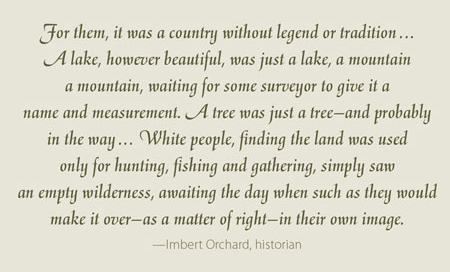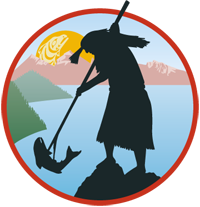![]()
![]()
Stó:lō Nation / Stó:lō Research
& Resource Management Centre

The Reach Gallery
Museum Abbotsford
Xwelitem Transformations

Transformation is central to the story of Stone T'xwelátse both in the distant past of the Sxwōxwiyám and also in more recent history. In the distant past, Xexá:ls used their power of transformation to bring the people and land into harmony. More recently, in the last two hundred years, the arrival of European settlers—Xwelitem—brought transformations that threw the people and the land into chaos. The gold rush. The creation of reserves. Children sent to residential school.
It is within the context of the transformations unleashed by Xwelitem settlement that the next part of Stone T'xwelátse's story unfolds. To evoke the impact of these transformations, Xwelitem artist David Campion chose the iconic landmark features of Lhílheqey and Semá:th Lake to speak to how European settlement both physically and imaginatively changed the landscape of S'ólh Téméxw.
